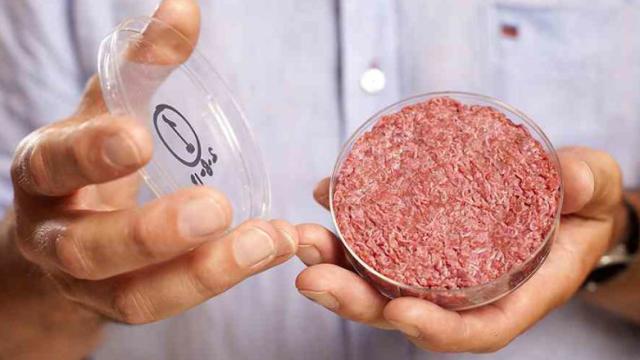When a team of Dutch scientists unveiled the world’s first stem cell beef burger in 2013, it carried a $US300,000 price tag. Worse, it was dry and tasteless. But since the initial lacklustre reviews, Mark Post and his colleagues have been hard at work. Now, they say they hope to have a commercially saleable cow-less patty on the market in five years.
Until very recently, lab-grown beef sounded like science fiction. But rapid advances in molecular biology and stem cell technology have placed the futuristic concept within reach. And the arguments for removing animals from the meat equation are practically endless: The meat industry as it exists today swallows an enormous fraction of our land and natural resources, produces vast quantities of greenhouse gases, has contributed to the rise of antibiotic resistant infections, and in many cases, is downright cruel. If test tube burgers can eliminate or diminish even a fraction of these problems, then this seems like one crazy idea worth pursuing.
And pursue it scientists have. In addition to Mark Post’s stem cell burger effort, a team of Israeli researchers under the banner Future Meat are now trying to grow whole chicken breasts in the lab. Meanwhile, efforts to culture fish protein have cropped up intermittently over the years.
Still, five years until we’re slapping tomato sauce and pickles on artificial meat seems like an awfully fast turnaround for a technology that was at best very nascent two years ago. But Post, who recently founded the company Mosa Meat with the objective of fast-tracking his niche product to mass production, now feels that a five year goal is achievable. As Post told the BBC, the burgers would likely be available as an exclusive, “order on demand” product at first, but “would be on supermarket shelves once a demand had been established and the price comes down.”
While the exact cost of the burgers isn’t yet certain, it’s likely to be competitive. Earlier this year, Post’s team announced that his team had been able to slash the price tag to just a little over $US11 per burger, or $US36 per pound of cow-less beef. Which is totally comparable to what Western foodies are willing to dish out for a gourmet grass-fed patty at a gastropub these days.
But most importantly of all: Will Post’s future burger taste like juicy, delicious beef, or a sad, bloodless wannabe? There’s reason to be hopeful, because, as Post told me this summer, his team is currently in the process of incorporating the key ingredient that was missing from the 2013 burger demo: Fat. That’s right, stem cell burger 1.0 was pure, unadulterated muscle fibres. To human taste buds, this is pretty bland. The researchers are also trying to figure out how to up the iron content of the muscle fibres — another factor that makes a big contribution to flavour.
I’ve still got my doubts that I’ll be able to order Post’s crazy burger on Amazon in five years, but you can sure as hell bet that whenever it is available for less than $US50 bucks, I’m gonna give it a try.
[BBC]
